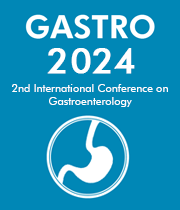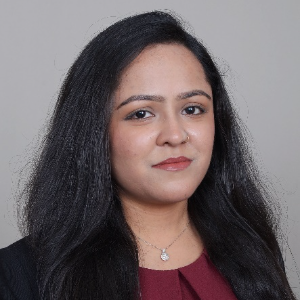Title : New-onset ulcerative colitis in the tenth decade of life
Abstract:
Introduction: Ulcerative Colitis (UC) exhibits a bimodal age distribution, affecting 10–30% of the population beyond the age of 60. Recognition of elderly-onset UC remains challenging. Over the past two decades, only 10% of patients aged over 80 have received a diagnosis, and new-onset cases in this age range are as low as 1%. We present a case of new-onset UC in a patient in the tenth decade of his life who reported a five-week history of hematochezia and significant weight loss.
Case Presentation: Elderly male in his 90s with a past medical history significant for coronary artery disease and benign prostatic hypertension presented to the emergency department with a five-week history of bloody diarrhea, weight loss, gas, and bloating. Upon admission, the patient exhibited a blood pressure of 143/69 mmHg, a pulse rate of 69 bpm, and showed a mildly tender abdomen with a benign rectal exam. Initial laboratory findings indicated a hemoglobin level of 12.3 g/dL and a hematocrit of 36.3%. A CT scan of the abdomen and pelvis with contrast revealed colitis.
The patient had been following up with a gastroenterologist outpatient, and a previous workup revealed elevated inflammation markers, calprotectin, and lactoferrin. Stool tests, including clostridium difficile, fecal fat, fecal leukocytes, and tests for ova and parasites, were all negative. An outpatient CT scan of the abdomen and pelvis with contrast indicated sigmoid colitis and proctitis unrelated to diverticular disease.
After a gastroenterology consultation, the patient underwent a colonoscopy, revealing diffuse ulceration and friability throughout the entire colon. Multiple biopsies were taken, and histopathology confirmed active inflammation with a neutrophilic infiltrate, cryptitis, and erosions, consistent with an UC diagnosis.
He was treated with hydrocortisone 100 mg IV every 8 hours, leading to an improvement in his symptoms. Upon discharge, he was prescribed a tapering dose of steroids and sulfasalazine.
Discussion: The clinical features of elderly-onset UC are often more non-specific, leading to a higher likelihood of misdiagnosis during the initial presentation in elderly patients. Colonoscopy and mucosal biopsy stand as the primary methods for diagnosing UC. While a CT scan is not recommended as the primary means of diagnosing UC, it is useful imaging technique for exclusion of other conditions like diverticulitis and ischemic colitis.
Conclusion: Diagnosing UC in the elderly is challenging. While rare in older age, it is still possible and may become more prevalent as more people reach their 80s and 90s.
Audience Take Away:
- The audience will gain insights into the challenges and diagnostic considerations of new-onset ulcerative colitis in elderly patients, especially those in their 90s. They will learn about the atypical clinical presentation and the importance of considering ulcerative colitis in elderly individuals with non-specific symptoms such as bloody diarrhea and weight loss.
- The case highlights the significance of colonoscopy and mucosal biopsy as primary diagnostic tools in such cases. Healthcare professionals, particularly gastroenterologists, will benefit from understanding the nuances of diagnosing ulcerative colitis in the elderly.
- Increased awareness of the clinical features and diagnostic challenges in elderly-onset UC can aid in timely and accurate diagnosis, preventing misdiagnosis or delayed treatment. Yes, this case report provides valuable information for faculty and researchers studying gastrointestinal diseases, especially in the elderly.
- The unique aspects of the case, such as the rarity of new-onset ulcerative colitis in the tenth decade of life, may spur further research into the epidemiology and clinical characteristics of UC in advanced age.
- In the context of healthcare professionals, the case report doesn't necessarily offer a "design" solution, but it does contribute to the understanding of diagnosing and managing ulcerative colitis in the elderly.
- The insights gained can potentially inform improved guidelines or protocols for approaching cases of UC in advanced age, making the decision-making process more efficient. The case report contributes new information by presenting a rare case of new-onset ulcerative colitis in an individual in their 90s.
- The details about the diagnostic process, including the importance of colonoscopy and mucosal biopsy, can guide healthcare professionals in accurately diagnosing similar cases.
- Increased awareness of the possibility of ulcerative colitis in elderly patients. Insights into the atypical clinical features of elderly-onset UC. Recognition of the role of colonoscopy and mucosal biopsy in diagnosis.
- The case report emphasizes the need for careful consideration of UC in elderly patients with non-specific symptoms.



